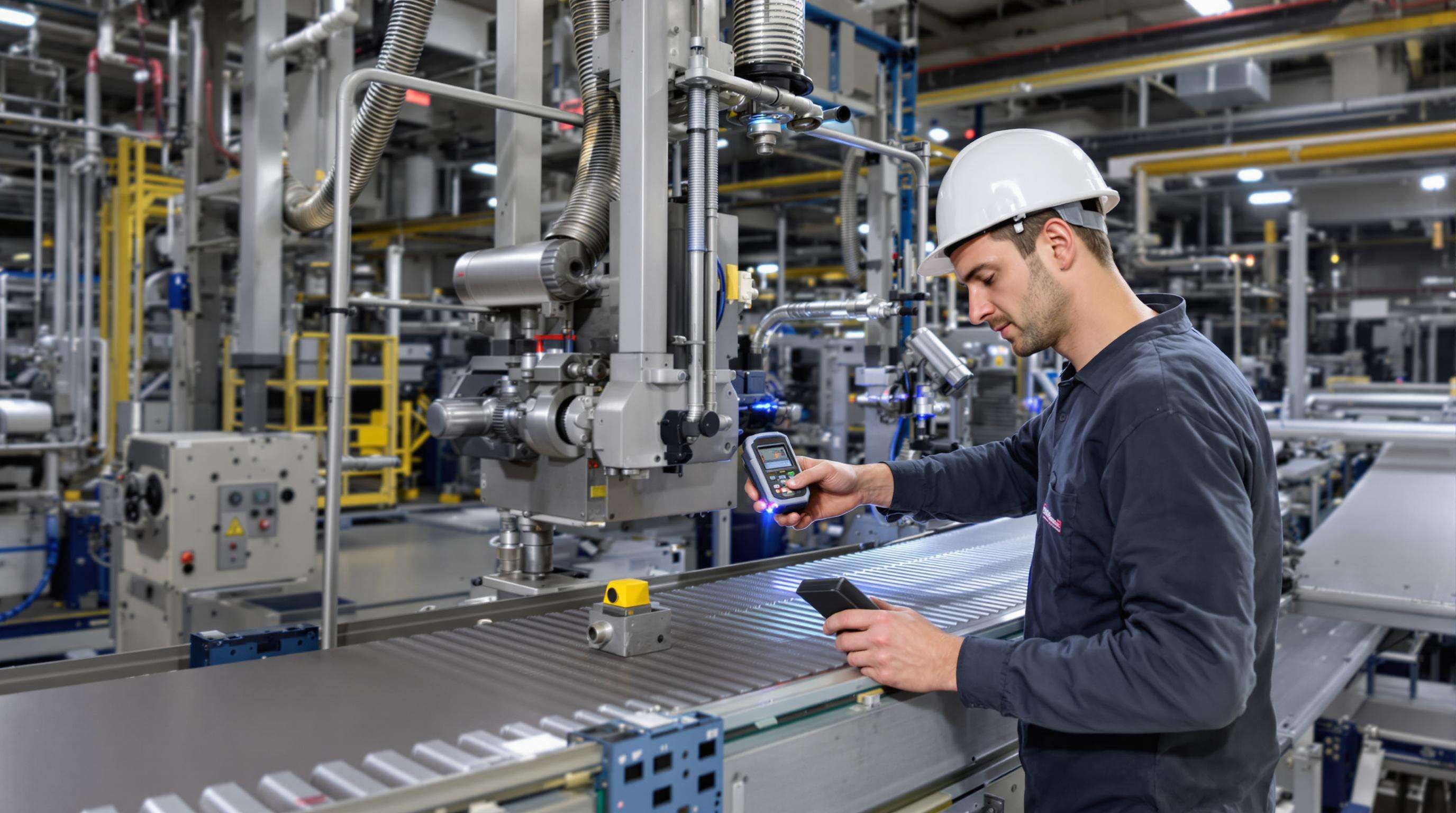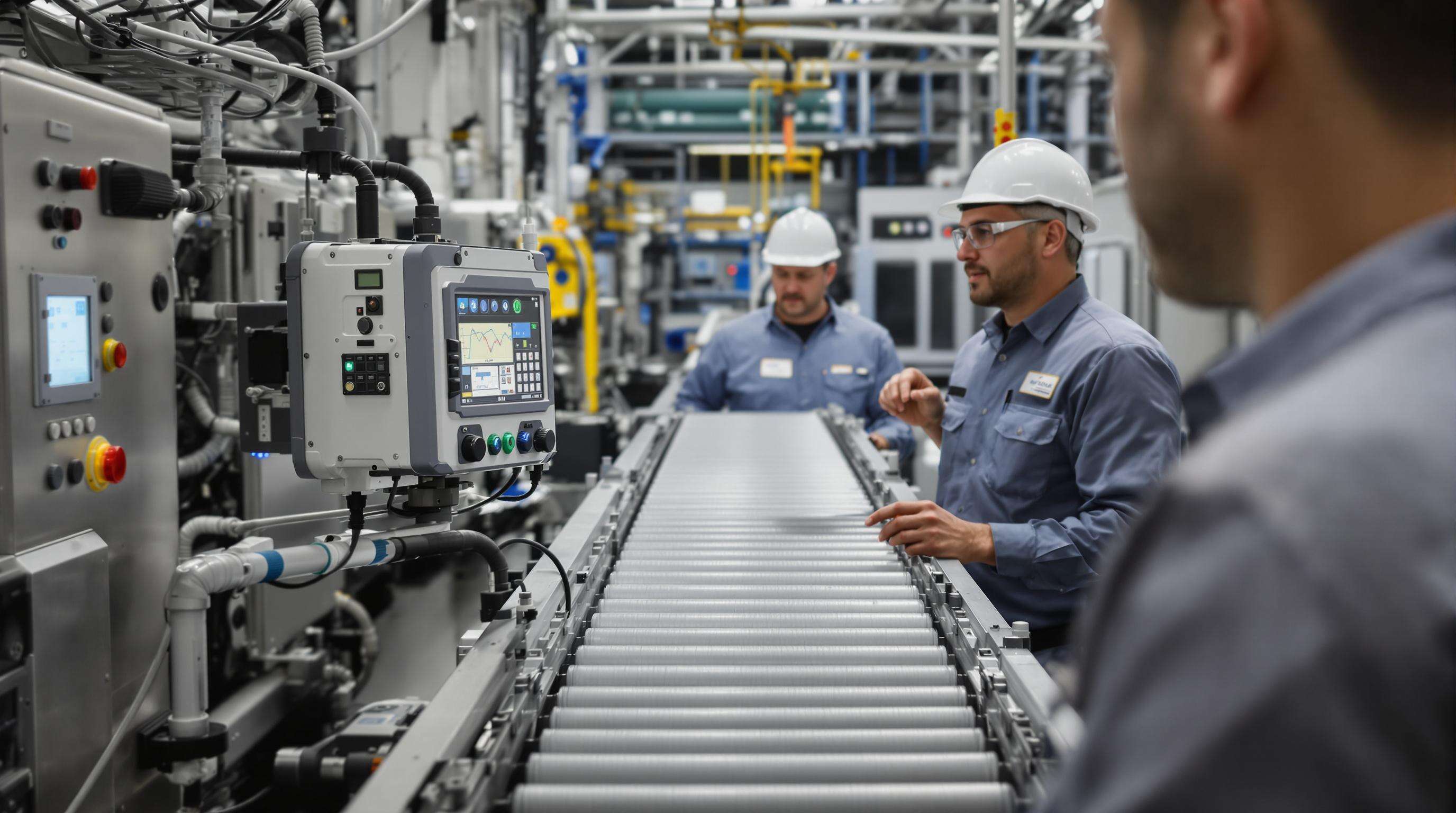Preventive maintenance for belt conveyors really pays off in the long run, extending their useful life by fixing small issues before they become major problems. Belts, pulleys, and bearings all tend to wear down eventually, but regular checkups and timely repairs can often make equipment last twice as long based on what most industry reports show. Good maintenance helps reduce wear at those tricky splice points where belts join together, keeps rollers running smoothly with proper lubrication, and saves money overall since replacing a belt unexpectedly usually costs three times what it would have cost to fix things properly beforehand. Plants that stick to these routines commonly see belts lasting over eight years instead of needing replacement every three years or so when there's no proper maintenance plan in place.
Regular maintenance checks throughout the week really boost how materials move through facilities by cutting down on those annoying productivity killers we all face. Technicians who take time to tweak tension systems and check if pulleys are properly aligned can stop belt slippage before it happens something that causes serious throughput problems in big operations, sometimes losing over 15% capacity. When shops stick to their lubrication schedule instead of waiting for things to seize up, they actually save between 7 and 12% on energy costs while also preventing those frustrating surprise shutdowns nobody wants. Looking at actual data from manufacturing plants shows a huge difference too plants with proper maintenance logs report about three times fewer conveyor issues compared to places that just fix things when they break down completely. And let's not forget the money factor either consistent maintenance prevents around $140,000 per hour in lost revenue for major manufacturers, since random equipment failures basically bring entire production lines to a grinding halt during peak hours.
Implementing structured maintenance protocols ensures belt conveyor systems achieve maximum operational efficiency while minimizing unexpected downtime. Consistent daily and weekly routines help identify minor issues before they escalate into major failures.
Begin each shift with a comprehensive visual walk-around. Scan belts for abnormal wear patterns like gouges or scalloped edges indicating misalignment. Check rollers for flat spots and inspect frame structures for cracks or corrosion. Document observations to establish wear-rate baselines.
During daily checks, prioritize structural integrity verification:
Operators should:
Follow a systematic lubrication schedule:
| Component | Lubricant Type | Frequency | Volume |
|---|---|---|---|
| Roller Bearings | Lithium Complex Grease | Weekly | 1-2 pumps |
| Drive Chains | Synthetic Chain Lumber | Bi-weekly | Full coverage |
| Pulley Shafts | EP2 Grease | Monthly | Until purge |
| Use grease meters to avoid over-lubrication, which attracts contaminants and increases failure risk by 22% (Machinery Lubrication 2023). |

Effective monthly maintenance of belt conveyors centers on two critical factors: proper alignment and precise tension control. These measures prevent premature wear, reduce energy consumption by up to 15% (Industry Journal 2023), and minimize unplanned downtime.
Begin by examining pulley surfaces for grooves, cracks, or material buildup common culprits of mistracking. Misaligned pulleys force belts to work against friction, accelerating wear. Use straightedges to verify pulley parallelism, ensuring all components sit within 0.5° of alignment.
Improper tension accounts for 34% of belt conveyor failures. Measure tension using frequency-based tools or the "belt sag" method. Adjust take-up systems incrementally over-tensioning strains motors, while under-tensioning causes slippage. Aim for 1-2% elongation in fabric belts or 0.5% in steel-reinforced variants.
Laser alignment systems now achieve <1mm accuracy, replacing manual string methods. These tools map the belt’s path across idlers and pulleys, detecting deviations invisible to the naked eye. Systems with real-time feedback enable adjustments during operation without production pauses.
Stickier materials increase idler bearing stress by 40%. Rotate stationary idlers manually resistance indicates bearing failure. Inspect support structures for corrosion or cracks, particularly at load-bearing joints. Replace any component showing >3mm deformation.
When leftover material sticks to conveyor belts after they've dumped their load, it cuts down on production capacity by around 15% across many industries according to recent industry reports. The main culprits? Poor seals at transfer points or scraper blades that have seen better days. This leads to messy spills all over the place plus faster wear on rollers throughout the system. To fix these problems, companies can apply special anti-static coatings to their belts or tweak those skirting systems so there's less space for stuff to escape. Take one food processor for instance who saw massive improvements when they switched to urethane skirting combined with air-powered seals. Their carry back dropped nearly three quarters overnight and they saved about twelve grand each year just on cleaning up messes.
Belt slippage typically stems from inadequate tension (below 85% of the manufacturer's specification) or contaminated drive pulleys. Operators can identify developing slippage through:
A recent study found that 62% of slippage-related downtime resolves with proper tension recalibration using laser-guided tools. Contamination issues improve through daily pulley cleaning and replacing worn lagging materials.
Misalignment in rollers and pulleys accounts for 34% of premature belt failures. Operators should:
A cement plant extended belt lifespan by 40% after implementing these protocols, saving $18k yearly on replacement costs.
A mining operation reduced unplanned downtime by 210 hours/year by addressing persistent slippage on a 500-meter incline conveyor. After discovering tension was 22% below specifications, technicians:
These changes eliminated slippage within 8 weeks while improving energy efficiency by 9%–a $28k annual savings. The solution demonstrates how data-driven tension management optimizes both reliability and operational costs.

Putting together an effective maintenance system means mixing regular checkups, smart data analysis, and fixing problems when they happen to keep things running smoothly without unexpected breakdowns. According to recent industry research, companies that follow planned maintenance routines see around 60-65% fewer conveyor belt issues than those who wait until something breaks down first. The best approach starts with figuring out how often different parts need attention based on what kind of load the conveyor handles daily, the materials moving through it, and where it sits in the plant environment. Don't forget to include oiling schedules for bearings, proper tension settings for the belts themselves, and knowing when components like rollers or pulleys start showing signs of wear before they fail completely.
Schedule those belt tracking checks every three months, monthly looks at the drive motors, and full structural evaluations once a year on the operation calendar. For unexpected maintenance needs, set up alerts based on actual conditions. When alignment sensors pick up anything over 3mm deviation, they should automatically generate work orders. Facilities that run really well tend to dedicate around 15 to 20 percent of their weekly labor time just for these kinds of preventive jobs. This creates space in the schedule for emergency fixes while keeping everything else running smoothly. Some plants even keep extra staff trained specifically for these routine checks so they don't have to scramble when something goes wrong unexpectedly.
Equip teams with decision-making tools like:
Conduct bi-annual simulations to improve incident resolution times. Plants with certified maintenance teams resolve alignment issues 37% faster than untrained crews.
Implement IIoT-enabled sensors to track:
| Parameter | Optimal Range | Maintenance Trigger |
|---|---|---|
| Belt Temperature | 20–40°C | >45°C for 15+ minutes |
| Drive Motor Vibration | 4.5 mm/s RMS | ≥5.5 mm/s RMS |
| Tracking Deviation | ±10 mm | ±15 mm |
Cloud-based platforms analyze trends to recommend tension adjustments or roller replacements 8–12 weeks before failures occur. Facilities using these tools report 28% longer conveyor lifespans and 19% lower annual maintenance costs.
This systematic approach transforms sporadic repairs into a lifecycle management strategy, ensuring belt conveyors meet production demands sustainably.
Preventive maintenance is crucial as it helps extend the lifespan of belt conveyors, reduce wear and tear at critical points, and minimize unexpected downtime, thereby saving operational costs.
Routine maintenance boosts operational efficiency by ensuring smooth material flow, reducing energy costs, and preventing unexpected shutdowns that can significantly impact productivity.
Common issues include material carry-back, belt slippage, misaligned rollers, and worn pulleys that can lead to system inefficiencies and premature equipment failures.